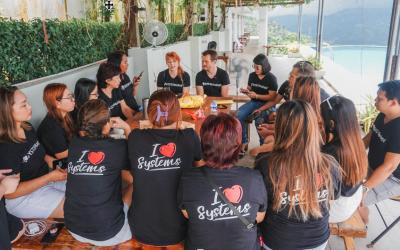There are many different ways through which you can write or build a standard operating procedure. SOP software development in itself can take time and effort, and what’s more, no two processes are ever going to be quite the same! However, there are a few rules of thumb for process management which you should always be keeping in mind.
Keep a Clear User Viewpoint
You should always be thinking about your end user when you write an SOP. That is because, naturally, they are going to be following it to the letter. Therefore, you should always write with the reader’s perspective in clear focus.
- This means presenting ideas clearly and concisely.
- It also means using steps and stages to ease users through a given process.
- You should always avoid unnecessary jargon or filler. Keep it simple, but thorough.
- Always say what you mean. Ambiguous language is a no-no in SOP writing.
Format Clearly
As well as being careful with language, process documentation should always use intuitive formatting. Simply put, how can you best put across the processes and steps involved? If you are building an SOP with little to no variables in terms of outcome, why not use a checklist?
An essential to bear in mind for more complex processes is the format of a flowchart or diagram. Develop something that users can digest stage by stage. Clearly mark where choices branch off, and what impact they have.
Keep Scope in Mind
There’s nothing more irritating than handling a system which isn’t clear on scope. At the start of the SOP writing process, you should always clearly state what your system does. How far does it stretch? Who does it impact?
This ties in with the idea of leaving no ambiguity. You’ll need to address scope and boundaries early on in the flowchart or diagram, where applicable. The last thing you will need is for someone to use your SOP for the wrong purpose, or to ignore it altogether.
Observe Roles and Impacts
A functional SOP, not just a great one, should tell users where they need to be, and what they need to do. All procedure documentation should give confidence to the reader. Where do they fit in? How much of an impact do they make on the wider project?
An SOP user needs to know boundaries and responsibilities. Otherwise, it’s a catch-all system which could be ignored.
Seek Authority and Approval
These are the standard operating procedures essentials you should know. Lastly, all SOPs must be signed off on by those impacted, and by upper management. It cannot be stressed enough that sliding a system into play without a clear announcement is simply bad practice.
Brand, management and team approval will ensure that an SOP neatly slides into company culture so it can start to make changes.
If you’re new to business systemisation and would like to know more about what to include in your SOPs, we’re here to help. Call systemHUB today on 1300 149 301 or email us with any queries at your convenience.










